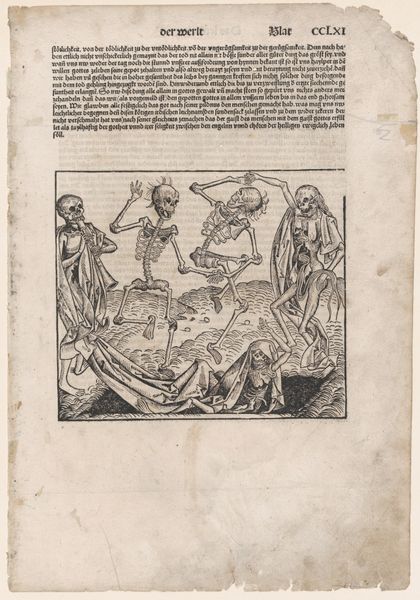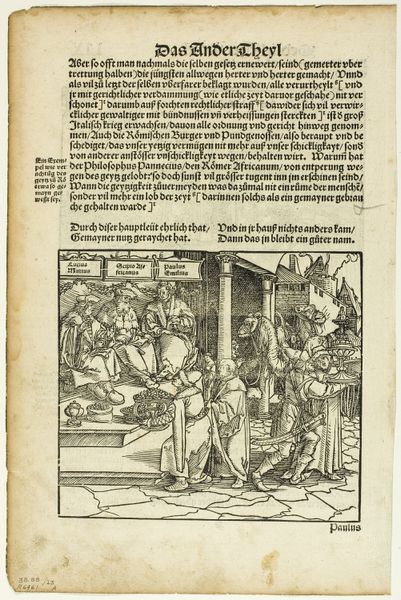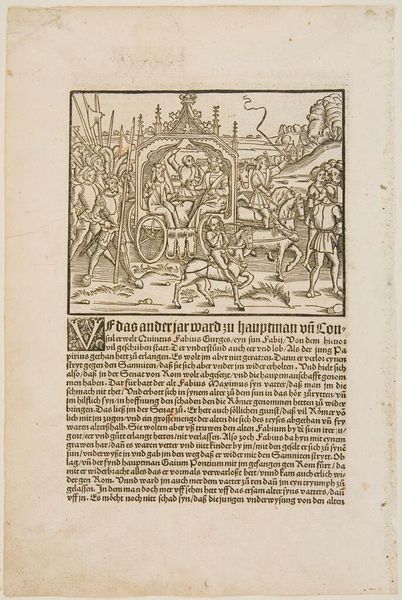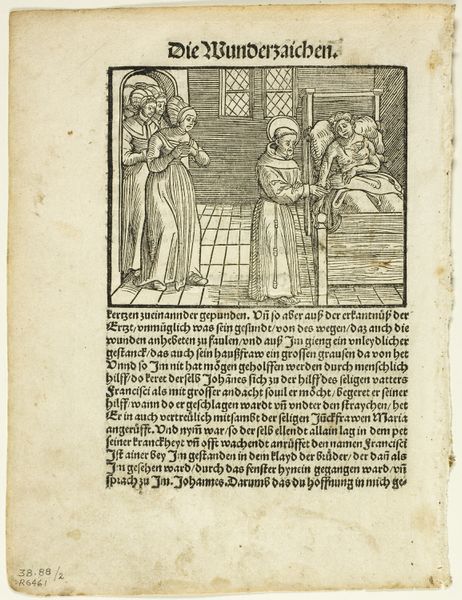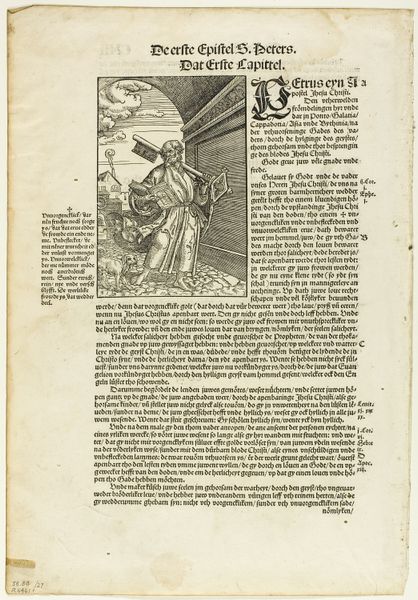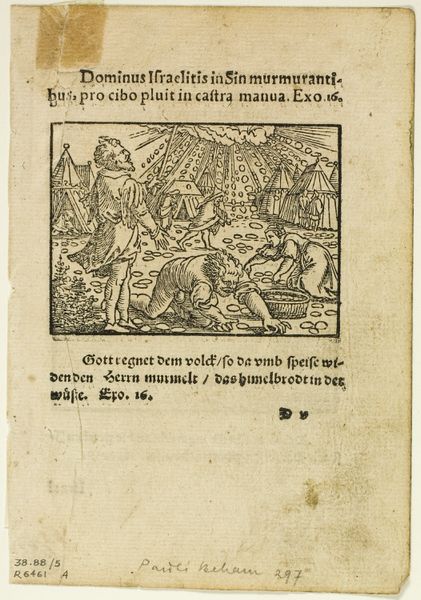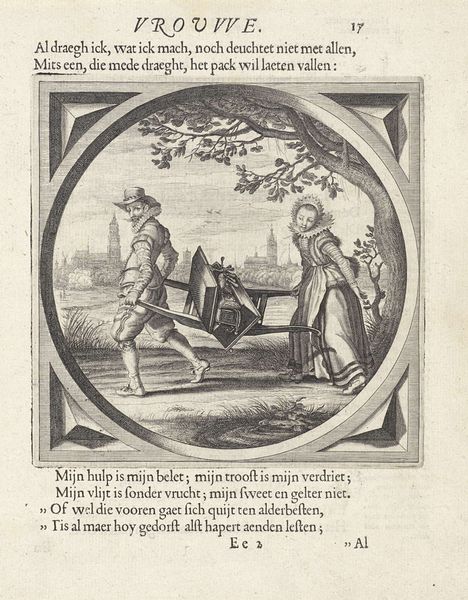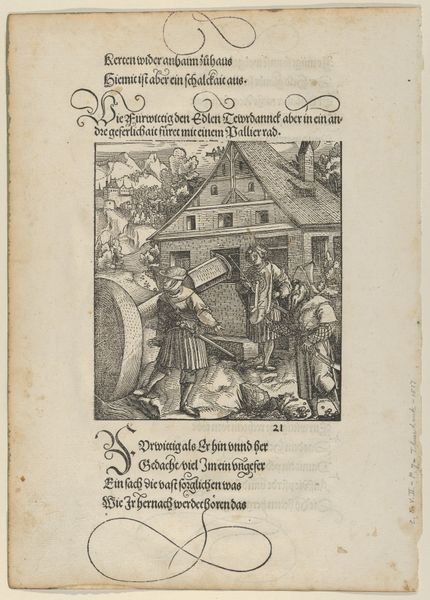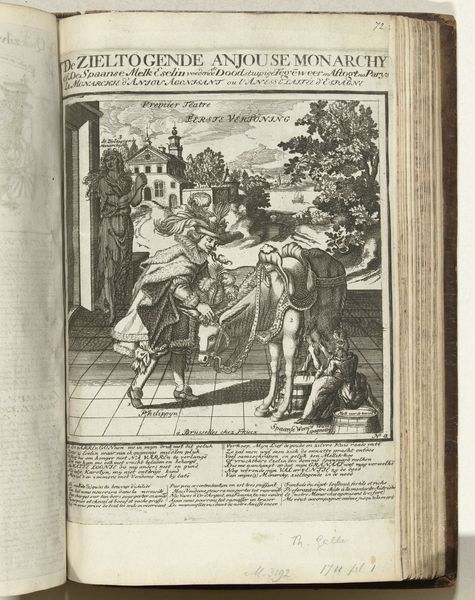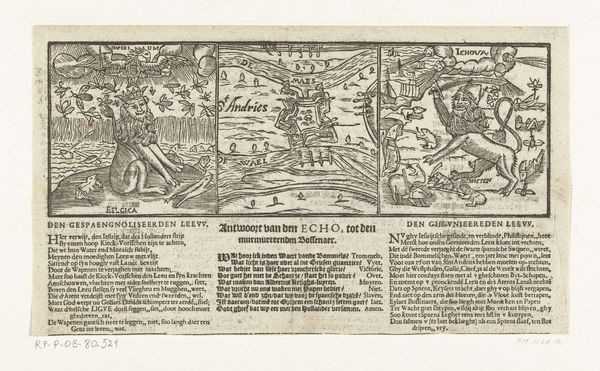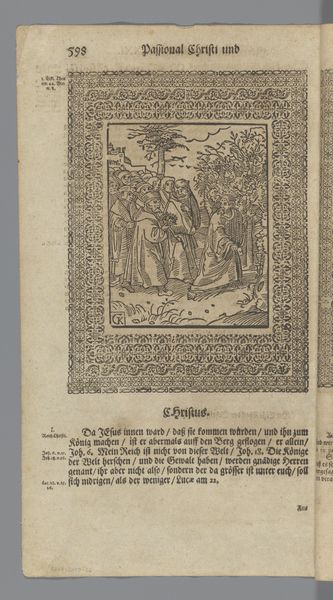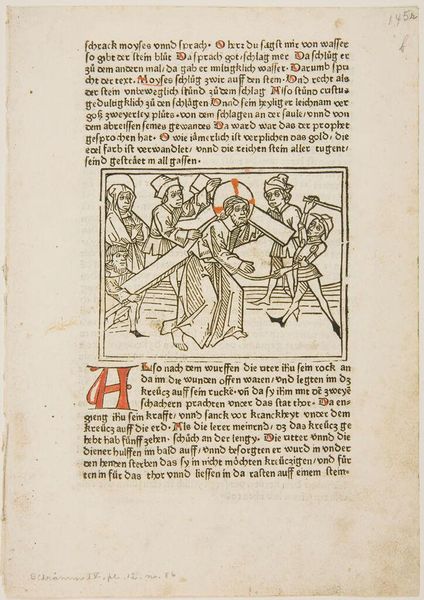
Illustration from Sebastian Brandt: Navis Stultifera, Strassburg 1497 1485 - 1528
0:00
0:00
drawing, print, woodcut
#
drawing
#
medieval
#
narrative-art
# print
#
figuration
#
woodcut
#
northern-renaissance
Copyright: Public Domain
This woodcut, crafted by Albrecht Dürer in 1497 for Sebastian Brant’s "Ship of Fools", plunges us into a world laden with symbolism. A jester, with his motley garb and bells, walks alongside a skeletal figure bearing a coffin – an unmistakable personification of Death. The jester, historically, is a figure of folly and satire, a mirror reflecting society’s vices. Here, he embodies humanity's blind ignorance, heedlessly enjoying life while Death looms. The image resonates with the medieval "Danse Macabre," where Death leads people from all walks of life in a dance towards the grave. Consider how this motif surfaces again and again, from the frescoes of the Campo Santo in Pisa to Ingmar Bergman's "The Seventh Seal." It represents the inescapable reality of mortality, a memento mori urging us to reflect on our fleeting existence. This stark contrast—the jester's merriment against the grim reaper—evokes a deep psychological tension. The dance between life and death, folly and wisdom, engages our subconscious anxieties about mortality. It is a potent reminder of our own vulnerabilities, a theme that echoes through centuries of art and human experience. The cyclical nature of life, death, and rebirth, endlessly replayed in our collective consciousness.
Comments
No comments
Be the first to comment and join the conversation on the ultimate creative platform.
